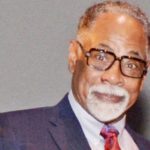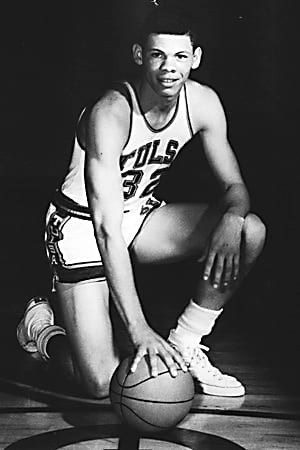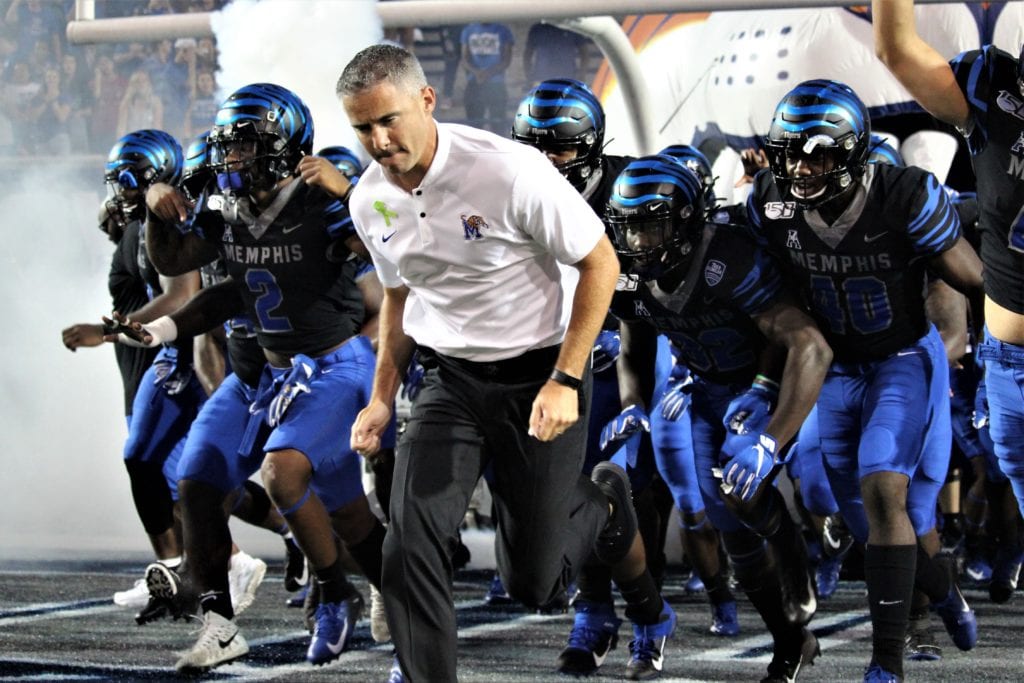Dr. L. LaSimba M. Gray Jr., Special to The New Tri-State Defender

In the metamorphosis of Memphis, too often the role of sports and fan avidity are overlooked.
Sports in Memphis have long been part of the city’s social fabric – from the The New Memphis Jockey Club in the 1800s right on up to the Memphis Tigers’ football team’s recent appearance in the Goodyear Cotton Bowl.
In the early 1960s, Memphis was still in the vise grip of segregation. But it would be basketball in the Memphis City Schools that led to the integration and the easing of racial tensions. And the star at the center of it was Bobby Smith.
It could well be said that Bobby “Bingo” Smith integrated Memphis with a basketball. Smith was the leading high school basketball star at Melrose High School, a school for black students only at that time.

(Photo: Univ. of Tulsa Sports)
Smith was such a prolific scorer – 32 points per game his final year at Melrose – that whenever he pulled up to shoot, the crowd would shout “Bingo!” He also reeled in a whopping 26 rebounds a game. Reportedly, as many as 126 colleges from coast to coast pursued Bobby Smith.
Wherever the Golden Wildcats played basketball in Memphis, the principals and athletic directors of the hosting schools were instructed to reserve seats for white fans. The reserved seats were strategically selected near an exit, to provide a quick exit for Whites if police showed up or if a fight or any confusion erupted.
Many of these White fans wanted Bobby Smith to attend Memphis State University, but athletic officials at Memphis State had no interest. Reportedly, it was because he had low grades.
But the community did not accept that excuse. Bobby was black and Memphis State University did not offer scholarships to Black athletes. Instead, Bobby Smith was offered a scholarship at the University of Tulsa.
In 1966, Memphis State was scheduled to host Tulsa at the Mid-South Coliseum – with Bingo Smith in the lineup. Even though the game was a sell out, hundreds of fans showed up hoping to get a ticket. Sure enough, Tulsa won the game, with Smith leading all scorers. According to Pete Mitchell, “Bobby put on a shooting exhibition,” leaving the Memphis State fan base lamenting, “Why did Memphis State allow Bobby to get away?”
Fan outcry forced the administration to revisit its policy on Black student athletes. Later, Herb Hilliard of Woodstock High School was recruited and given an athletic scholarship in 1967. Much like Jackie Robinson for baseball, Hilliard was tapped because he was “safe” – he was a solid both in the classroom and on the court. It was Hilliard’s pioneering presence in a Tiger uniform that led to the “Athletic Dynasty” that Memphis State was to become.
https://www.youtube.com/watch?v=rgCL5PiehoY
In the 1968-69 school year, Melrose High School produced another super star by the name of Larry Finch. Larry was highly recruited by major universities, including Tulsa University. Locally, Finch’s fans at Melrose High urged Larry to ignore the Memphis State offer.
However, not wanting another homegrown star to get away, Memphis State’s white fans pressured the school to sign Larry Finch. Black fans, however, reminded Finch of Bobby Smith plight. For them it wasn’t just that black athletes were not welcome, it was that the recruiting process denied great black athletes such as Bobby Smith. In Memphis, civil rights activists saw Larry Finch as a bargaining chip to demand better conditions for Black students and more Black faculty members.
Leonard Draper, a major supporter and longtime mentor for Larry Finch, weighed in on this controversy. Draper saw the bigger picture, persuading Finch to stay in Memphis. He was joined at Memphis State by Ronnie “Big Cat” Robinson, also a Melrose player.
The decision was not popular. Draper was intensely criticized for his role in Finch’s recruiting, and in fact, Finch’s high school coach, William Collins, refused to attend the signing ceremony.
But it paid off. Memphians – black and white – rallied around the dynamic duo from Orange Mound, transforming Memphis State and the City of Memphis. Larry Finch and Ronnie Robinson formed the nucleus of a winning basketball team and a winning tradition at Memphis State University.
Success on the hardwood also whetted fan appetite for a better football program. To comply with fan demands, university officials strategically met with community leaders seeking ways to recruit more Black football players. A change on the sideline was in order.
In 1971, Pete Mitchell, the legendary football coach at Melrose High School, was hired as an assistant football coach at Memphis State University where he played a major role in recruiting and developing players. In addition to coaching assignments, Mitchell was also a scout and recruiter of Black football players throughout the Mid-South. Pete Mitchell’s success was unprecedented.
For years, Memphis State basketball carried the economic weight of the entire athletic program, including football. In pursuit of a top-notch football program, the university hired proven coaches, recruited top football players regardless of race and made a financial commitment to the program. In 2010, those investments began paying dividends.
That’s the year Justin Fuente was hired as coach. By 2014, Fuente’s squad had a 10-3 record and was ranked nationally. Fuente left Memphis to coach at Virginia Tech, but the Tigers scored another win in Mike Norvell, who went 8-5 in his first season.

The winning tradition that began under coach Fuente continued under the explosive, pass-oriented offense coaching style of coach Norvell. By the end of Norvell’s third season, Memphis had a 12-1 record, was nationally ranked, and brought home the American Athletic Conference championship. With Norvell now at Florida State, the ball is in new head coach Ryan Silverfield’s hands.
As the seasons change from football to basketball, Tigers fans are now abuzz over the potential of a deep tournament run led by another hometown hoops star: Penny Hardaway. It’s appropriate that Hardaway was coached by Finch and now is the head coach for the team. Sports continues to bring this city together.
It reminds me of the wisdom of James Arthur Gray Sr., who was a teacher and farmer in Jago, Miss. “Every time a bee extracts nectar from a flower, that bee makes a deposit for the next flower.” As we cheer for our teams, remember we’re drinking the nectar left by people like Bobby “Bingo” Smith, Larry Finch and Mike Norvell. Winning sure is sweet!




